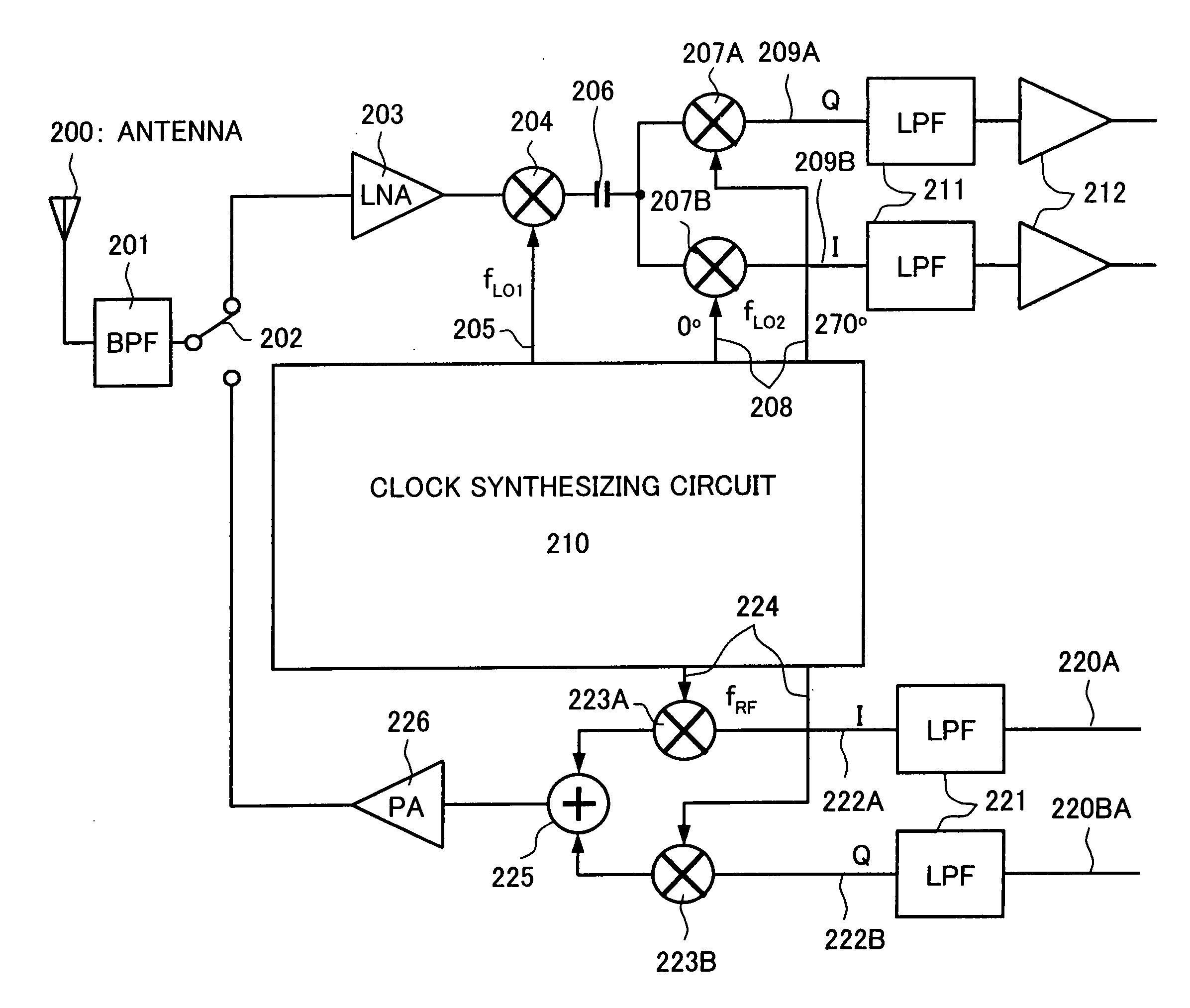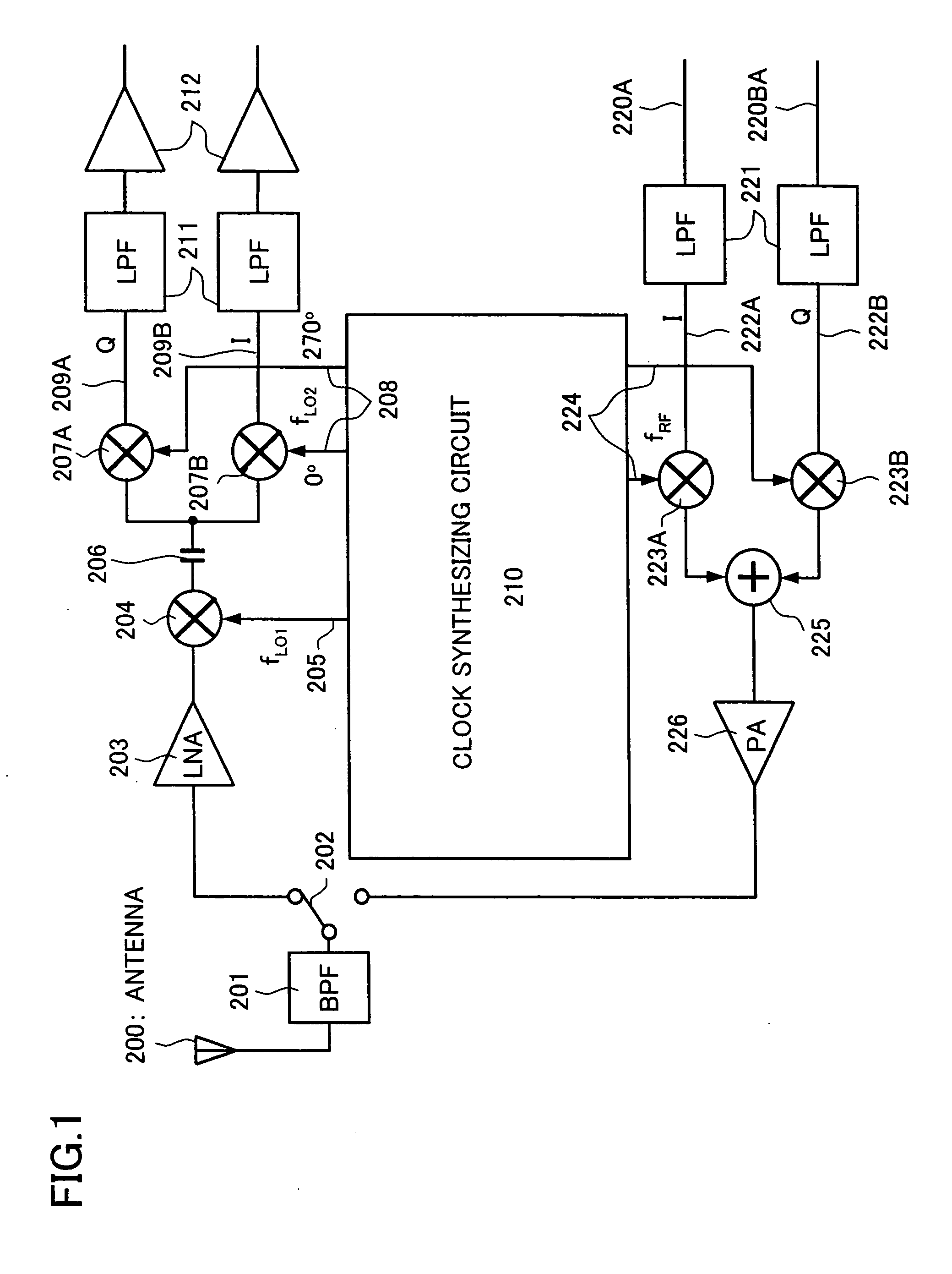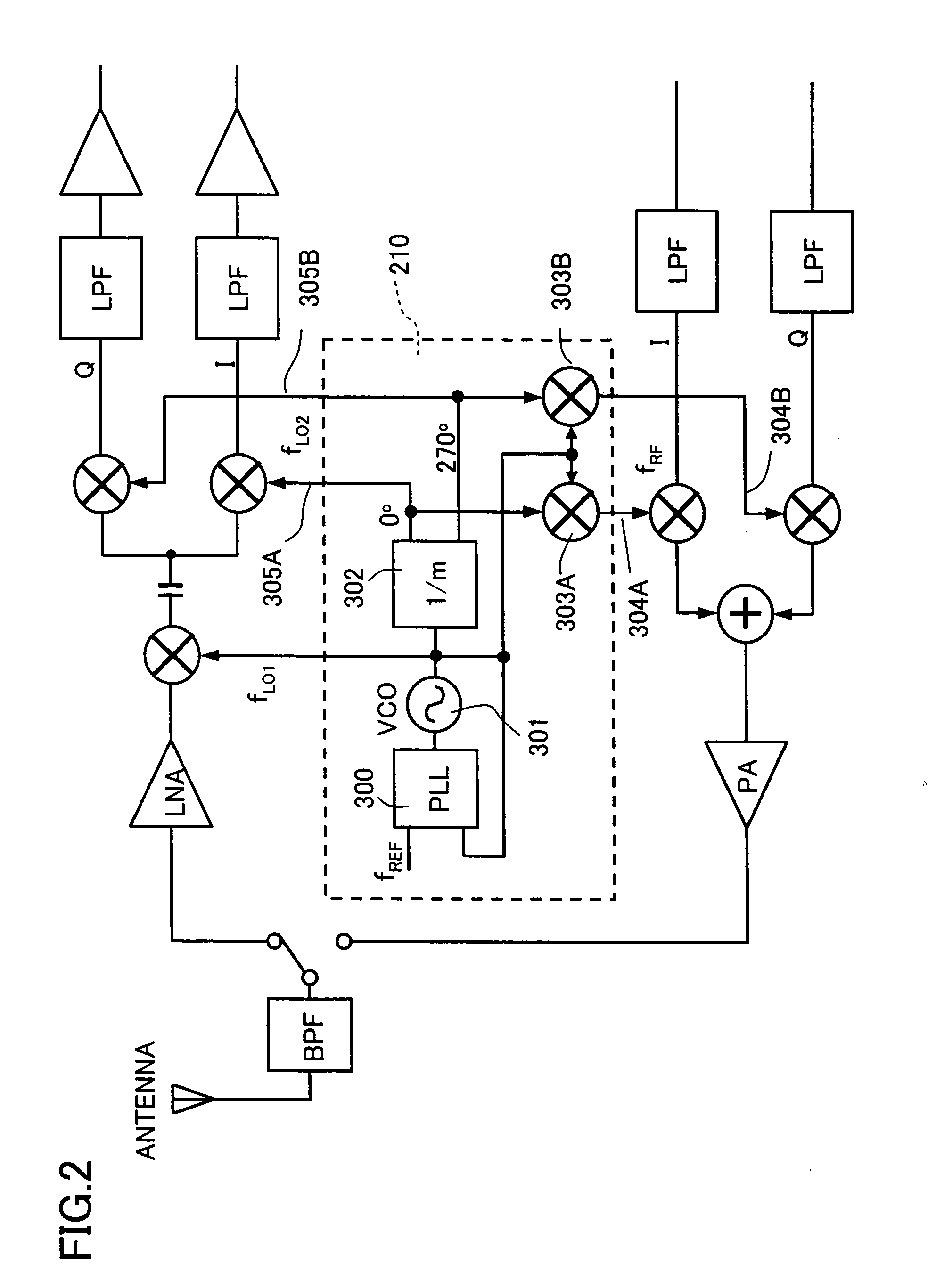Frequency conversion circuit, radio frequency wave receiver, and radio frequency transceiver
a frequency conversion circuit and radio frequency wave receiver technology, applied in the direction of digital transmission, duplex signal operation, pulse technique, etc., can solve the problems of heterodyne radio frequency transceivers not being conventional radio frequency transceivers have a problem, and the heterodyne radio frequency transceiver cannot be fully mounted in the ic chip (integrated circuit), so as to reduce power consumption and noise, the effect of down
- Summary
- Abstract
- Description
- Claims
- Application Information
AI Technical Summary
Benefits of technology
Problems solved by technology
Method used
Image
Examples
Embodiment Construction
[0076] The present invention relates to an analog signal processing section of an IC-chipped transceiver (radio frequency transceiver) that is used in a wireless communication system using a radio frequency of 1 GHz or greater. The wireless communication system is applicable to (i) a mobile communication system such as a mobile phone or a PHS (personal handyphone system), (ii) a wireless LAN (local area network) which is compliant with the IEEE 802.11 standard, or the like.
[0077] In a transceiver of the best mode for carrying out the present invention, radio frequency modulation (transmitting) and radio frequency demodulation (receiving) are carried out with respect to a base-band signal. The feature of the present transceiver resides in how the radio frequency modulation and radio frequency demodulation are carried out. An object of the present invention is to downsize the transceiver so that the function of the transceiver is incorporated in an IC chip, and the IC chip is mounted...
PUM
 Login to View More
Login to View More Abstract
Description
Claims
Application Information
 Login to View More
Login to View More - R&D
- Intellectual Property
- Life Sciences
- Materials
- Tech Scout
- Unparalleled Data Quality
- Higher Quality Content
- 60% Fewer Hallucinations
Browse by: Latest US Patents, China's latest patents, Technical Efficacy Thesaurus, Application Domain, Technology Topic, Popular Technical Reports.
© 2025 PatSnap. All rights reserved.Legal|Privacy policy|Modern Slavery Act Transparency Statement|Sitemap|About US| Contact US: help@patsnap.com



